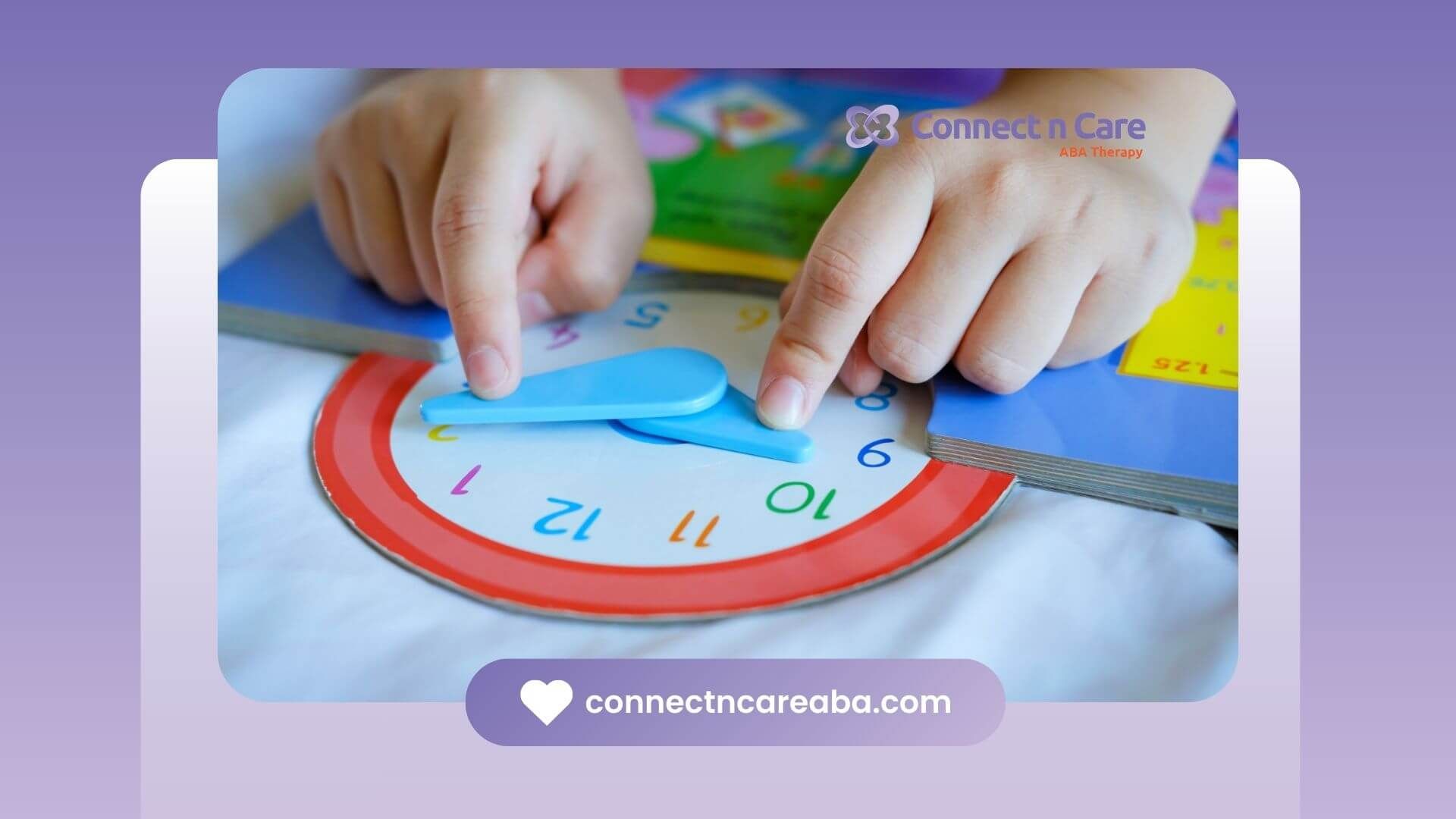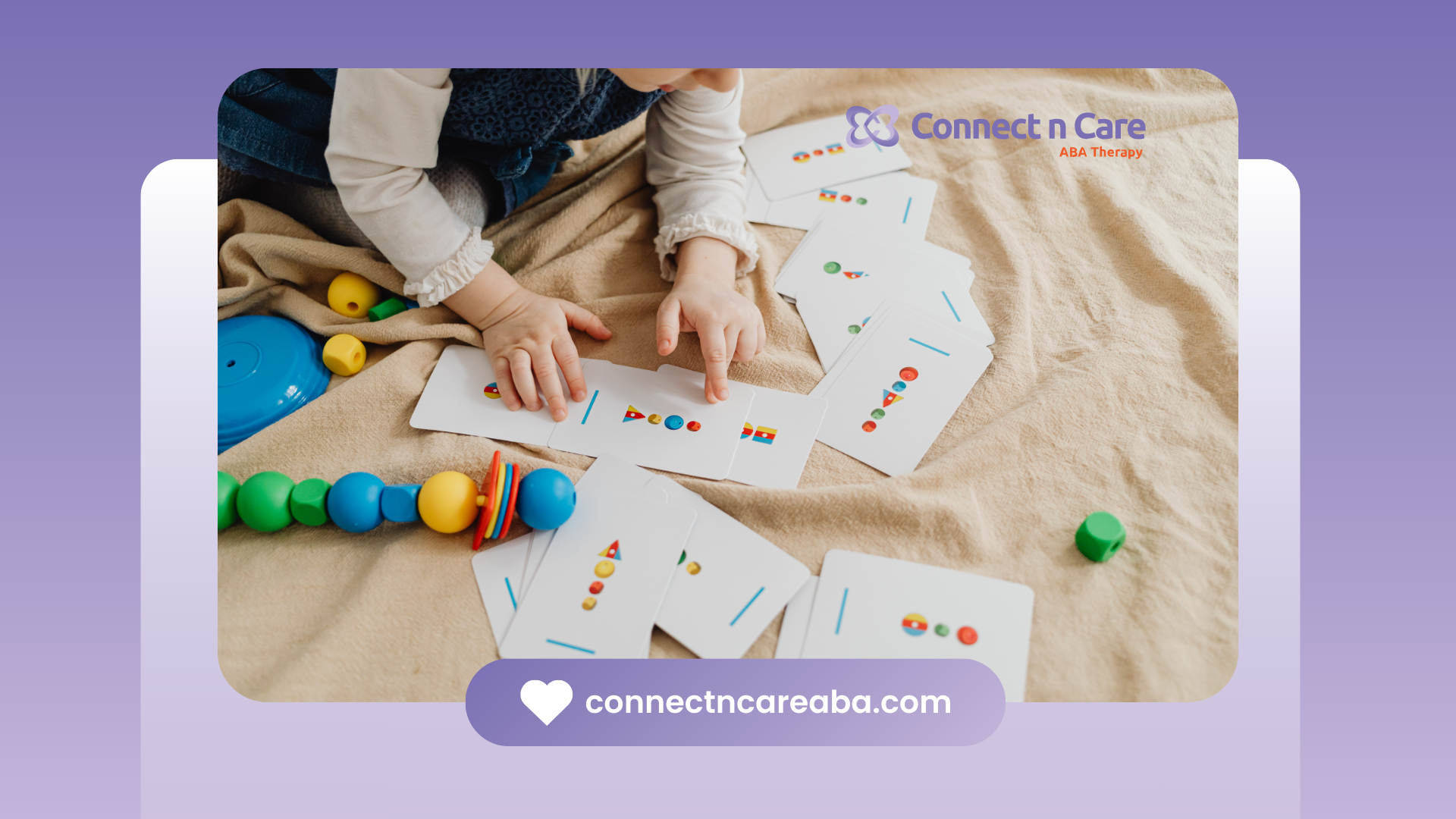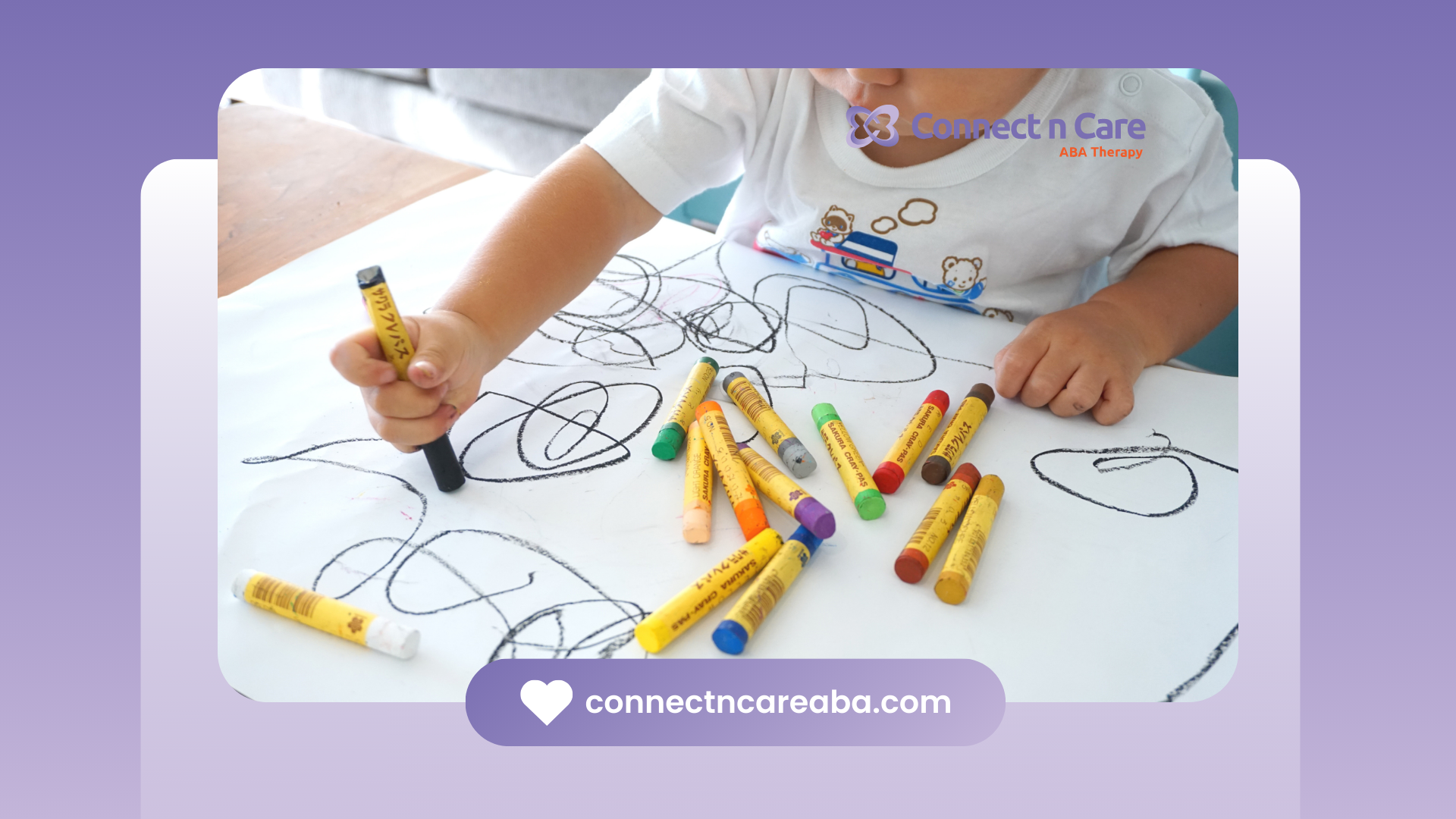Applied behavior analysis (ABA) helps us understand and deal with difficult behaviors. Instead of just seeing these behaviors as bad, ABA asks us to think about the reasons behind them. Every behavior has a purpose. It could be to get something fun, to avoid a tough situation, or to seek a certain kind of sensory input. Finding out these behavior functions is key to effective ABA therapy.
Delving into the Basics of Behavior in ABA
Behavior analysis is the scientific base of ABA. It helps us understand how behavior and the environment affect each other. Behaviors don’t happen alone; they are changed by events that happen before and after them.
By studying these patterns closely, we learn about the functions of behavior. This means we find out why people act in certain ways. Understanding this is very important for dealing with hard behaviors. Instead of just trying to stop unwanted behaviors, ABA therapy aims to teach good replacement behaviors that fulfill the same need for the person.
Defining Behavior Within Applied Behavior Analysis
In applied behavior analysis (ABA), "behavior" includes any action that you can see and measure. This is not just about actions that are considered "problematic." It includes everything from a child learning to say “please” to a teenager dealing with social situations.
ABA understands that each behavior is important, no matter how simple or complex it may look. Behaviors act as a way of communicating. They help people interact with the world around them and meet their needs.
With ABA principles, we try to understand what behaviors mean, especially those that may block someone from learning, making friends, or enjoying their daily life. Then, we can work together to encourage and support positive behavior changes.
The Significance of Understanding Behavior Functions
Imagine a child having a temper tantrum in a grocery store. At first, we might just call this "bad behavior." But ABA teaches us to look deeper. What is driving this behavior for the child? Are they wanting a candy bar (access function)? Or are they trying to escape the busy and loud store environment (escape function)?
Understanding behavior functions is important. It helps us find out the "why" behind actions. This is not about letting them off the hook for what they do. It’s about finding ways to help them that work well and are kind.
When we understand what motivates certain behaviors, we can create better plans that deal with the problem at its source, not just with what we see on the surface. This thoughtful approach is key to effective ABA therapy.
Unpacking the Two Main Functions of Behavior
There are different ways to group behavior functions, but two main categories are important: access to reinforcement and escape or avoidance. These main functions of behavior help us understand why someone may act a certain way.
Behaviors aimed at access are about getting something enjoyable. In contrast, escape behaviors are about getting away from or avoiding something unpleasant. Recognizing the function behind the behavior is key. This helps in creating effective strategies that meet the person’s specific needs and motivations.
The Role of Access in Behavior
Humans naturally seek rewards and enjoyable experiences. This natural desire for good things is important in shaping how we act. In ABA, we call this the function of access.
Behaviors that are kept up because they help a person get what they want are called access-maintained behaviors. This wanted result, known as positive reinforcement, can come in different ways. For young children, it could mean getting a toy or a treat.
But access is not just about getting physical things. It can also mean getting to do fun activities, like watching a favorite show. It can be about getting social attention, such as a parent's praise. It can even involve sensory input, like the comforting feeling of rocking back and forth.
Escape or Avoidance: A Closer Look
Just like we want to seek out good experiences, we also have a strong urge to stay away from bad ones. This natural reaction to avoid things we dislike is key to how escape or avoidance works in behavior analysis.
Escape behaviors happen when someone tries to get away from a situation, activity, or sensory experience that they find uncomfortable. For example, a child may act out to avoid a task they don’t like. An adult may skip social events because they feel anxious.
It's important to understand that what is uncomfortable can be different for everyone. What feels a little annoying to one person may be really upsetting to another. Knowing these individual differences is key to dealing with escape behaviors effectively.
Practical Examples of Behavior Functions
Let's look at access and escape using real-life examples of behavior functions.
A child who often throws a fit at the grocery store checkout might do this to get a candy bar. This is an example of access-maintained behavior because the tantrums have worked before (positive reinforcement).
Similarly, a student who says no to doing homework could be showing escape behavior. By refusing the homework, they can avoid something they find hard or boring (removing an aversive stimulus).
Real-life Scenarios Illustrating Access and Escape Functions
Here are more examples of behaviors and why they might happen:
Access:
- A young child calls out in class a lot, even when they know the answer. This could be to get the teacher's attention.
- A teenager plays video games for many hours, ignoring homework and chores. They might do this to enjoy the game.
- An adult who is scared of dogs stays away from streets where they might see dogs. This helps them feel safe and calm.
Escape:
- A student tears up their test when they get a low grade. They do this to avoid feeling shame or disappointment.
- A child with sensory issues has a tantrum when they have to wear scratchy clothes. This is a way to escape from uncomfortable feelings.
Seeing these patterns in everyday life can really help parents, teachers, and anyone who works with people with behavioral challenges.
How These Functions Manifest in Daily Activities
Understanding behavior functions helps us know why people act the way they do. This knowledge allows us to handle tough behaviors in a better way. It's not just about stopping the behavior. It's also about teaching better behaviors that can meet the same needs in a way that is okay with others.
For example, if a child throws a tantrum because they want a toy (access function), we can help them ask for the toy instead. They can say, "Can I please have the toy?" This teaches them a better way to get what they want.
Also, if a student does not want to do homework because they find it hard, we can help. We can break their homework into smaller parts. Or, we might let them choose parts of the homework. This can make the work easier and help them join in more.
Conducting Effective Behavioral Assessments
Identifying why a behavior happens is an important first step in ABA therapy. This usually starts with a complete functional behavior assessment (FBA). An FBA looks into what happens before the behavior, the behavior itself, and what happens after it.
This process uses different data analysis and observation techniques to create ideas about the reason for the behavior. It may include watching the behavior directly, talking to caregivers and teachers, and checking any related records.
Key Techniques for Functional Behavior Assessments
Functional behavior assessments (FBAs) are essential tools used in ABA therapy to uncover the reasons behind challenging behaviors. By understanding the function, we can develop effective interventions tailored to the individual's needs.
Data collection methods vary within FBAs and are often used in combination:
| Technique | Description |
|---|---|
| Direct Observation | Observing and recording the behavior as it occurs in natural settings to identify patterns and triggers. |
| ABC Recording | Noting the antecedents, behavior, and consequences surrounding instances of the behavior to pinpoint potential functions. |
| Interviews/ Questionnaires | Gathering information from caregivers, teachers, and the individual themselves about the behavior's history and context. |
| Functional Analysis | Systematically manipulating antecedents and consequences in a controlled setting to confirm hypothesized functions. |
Using data gathered through these techniques, behavior analysts develop hypotheses about why a behavior is occurring and tailor interventions accordingly.
Observational Strategies for Accurate Behavior Documentation
Effective ABA needs accurate data. Directly watching behavior is vital for collecting this data. It helps us understand how often, how intense, how long, and in what situation a behavior happens.
When observing, it's important to be systematic and fair. Clearly state the behavior you are watching. Pick the right method, like event recording for actions that have a clear start and end, or duration recording for those that change in length. Try to avoid any biases that might affect your observations.
Writing down detailed behavior gives a strong base for creating effective interventions. It helps track progress over time. It also makes sure everyone understands and handles the behavior consistently in various settings.
Crafting Targeted Intervention Strategies
Once we understand why a behavior happens, ABA therapists create behavior intervention plans (BIPs). These plans include steps to address the purpose of the behavior. They also teach better ways to meet the same needs.
BIPs usually focus on teaching replacement behaviors, which are better options than the challenging behavior. They also change the environment to help stop or lessen challenging behaviors. Finally, BIPs use rewards to encourage good behaviors.
Developing Behavior Intervention Plans Based on Function
Behavior intervention plans (BIPs) are personalized guides for managing difficult behaviors. They are made specifically for each person. BIPs consider the reasons behind the behavior and focus on the person's unique needs, skills, and way of learning.
For instance, if a functional behavior assessment (FBA) shows that a child's tantrums mostly happen when they want tangible items, the BIP could teach the child to ask for those items. They might use their words or a picture system to make requests. The plan might also suggest ways to make the environment more stable and reward good asking behavior.
If a student avoids schoolwork because they find it hard, the BIP could break down tasks into simpler steps. It may also involve giving regular breaks or letting the student choose parts of the task. This could help boost their motivation and lessen the urge to escape from the work.
Strategies for Teaching Alternative Behaviors
Teaching different behaviors is an important part of ABA therapy. The aim is to help people find good ways to meet their needs and face tough situations without using bad behaviors.
ABA therapists can use different methods to teach these skills, like:
- Prompting and Fading: Giving help (prompts) at first to teach the new behavior and slowly reducing that help as the person learns.
- Modeling: Showing the right behavior for the person to watch and copy.
- Reinforcement: Giving rewards (reinforcement) for trying and succeeding in using the new behavior.
By teaching different behaviors, like better ways to communicate, ways to handle anxiety, or proper methods to get attention, we help people manage their lives better and build good relationships.
The Crucial Role of Reinforcement
Reinforcement is when we encourage a certain behavior. It is a key part of ABA. When done right, reinforcement can help us encourage good behaviors and lessen the ones we don't want.
In ABA, we have two types of reinforcement: positive and negative. Positive reinforcement adds something good after a behavior. This makes the behavior more likely to happen again. For example, praising a child for sharing a toy is positive reinforcement. Negative reinforcement, which is sometimes confused, takes away something unpleasant after a behavior. This also makes the behavior more likely to repeat. An example is letting a student take a break after finishing a specific number of problems.
Differentiating Between Positive and Negative Reinforcement
Understanding the difference between positive and negative reinforcement is important in ABA therapy. Both want to increase good behaviors, but they work in different ways.
Positive reinforcement is about adding something good after a person shows the desired behavior. This could be things like praise, a small reward such as a sticker or toy, or letting them do a fun activity. The important part is that the person enjoys the outcome, which makes them want to do the behavior again.
Negative reinforcement makes a behavior more likely by removing something bad or unpleasant. This isn't about punishment; it's about stopping or avoiding something wanted. Remember, what someone finds unpleasant can be different for each person. It may depend on their sensations, fears, or past experiences.
Tailoring Reinforcement Strategies to Individual Needs
Effective reinforcement is more than just giving rewards or removing things that may be unpleasant. It needs a good understanding of what each person likes and what motivates them.
What works as a strong reinforcer for one person may not work at all for someone else. For example, one child might really like to earn stickers, while another child finds them boring. Also, giving one student a break from a worksheet could be very motivating, while another student may want to finish the worksheet quickly to get to a preferred activity.
To use reinforcement successfully, we need to find out what is truly important and motivating for each individual. Then, we must use those reinforcing actions regularly and wisely to boost desired behaviors. What helps one person might need to change or be completely different for someone else. This shows how important it is to tailor approaches in ABA.
Collaborative Approaches in ABA Therapy
Understanding the main functions of behavior is key to effective autism therapy, as it helps identify what motivates certain actions. Connecting with autism therapists near me can provide personalized support and strategies to address specific behaviors, fostering positive growth and meaningful progress. Start your journey with expert guidance today!
Effective ABA therapy goes beyond just the therapy room. It relies on teamwork among parents, caregivers, teachers, and other professionals. These people help support generalization, which means taking skills learned in therapy and using them in different settings. They also help create a steady and supportive environment.
Family involvement is very important. When families take part in the therapy process, they better understand ABA principles. They can then support skills and strategies at home. This active involvement leads to better and lasting progress.
Involving Families in the Therapeutic Process
Family involvement is very important for successful ABA therapy. When families get involved, they can become strong partners in helping their loved one's growth and development.
ABA therapists often work closely with families to:
- Teach them about ABA principles and how to use them at home.
- Work together to create and carry out behavior intervention plans (BIPs).
- Provide training on strategies and techniques to use with their loved one.
This teamwork helps make sure that support is used in all settings, which helps bring about lasting behavior change.
Embracing a Multidisciplinary Perspective
ABA therapy works best with a team of different professionals. This team focuses on the unique needs of the individual.
Along with the ABA therapist, the team may include:
- Speech-Language Pathologists (SLPs): They help with communication and social skills.
- Occupational Therapists (OTs): They assist with sensory processing and fine motor skills.
- Psychologists: They provide assessments and support for emotional health.
This team effort makes sure that all treatments are well-organized and cover all needs. It aims to improve the well-being of the individual. Good communication among team members is vital. It helps them share ideas, adjust plans, and celebrate wins.
Conclusion
In conclusion, understanding behavior functions in ABA is really important for creating good interventions and achieving positive results. By looking closely at access and escape functions, practitioners can make interventions that meet the unique needs of each person. Real-life examples show how these functions appear in daily life and help in creating specific intervention plans. Reinforcement is key in changing behavior, and personalized strategies can improve individual progress. Working together in ABA therapy, with families and different professionals, provides better overall support. When practitioners understand behavior functions and use proven strategies, they can create real changes and enhance the lives of those they help.
Connect n Care ABA in North Carolina is dedicated to empowering families through a deeper understanding of behavior. Their expert team specializes in applying the principles of ABA to uncover the main functions of behavior, creating tailored strategies that drive meaningful change. Ready to transform challenges into growth opportunities? Contact Connect n Care ABA today and experience the difference of personalized care!
Frequently Asked Questions
How Do ABA Therapists Identify a Behavior’s Function?
ABA therapists figure out why a behavior occurs. They do this by using different methods. They conduct functional behavior assessments (FBAs). They also observe carefully. Interviews with caregivers and teachers are important too. Lastly, they analyze data. This helps them guess why certain behaviors happen.
Can the Function of a Behavior Change Over Time?
A behavior can change as time goes on. This could happen for a few reasons. New learning, changes in the environment, and the development of new skills all play a part. It is important to keep checking how things are progressing. This helps us make sure that the methods we use still work well as people grow and change.
What Makes Reinforcement Effective in Modifying Behavior?
Reinforcement works best when it matches what people need and what motivates them. Using the right rewards that fit each person is important for encouraging the behaviors we want to see. Bit by bit, applying these personalized rewards can lead to better results.









